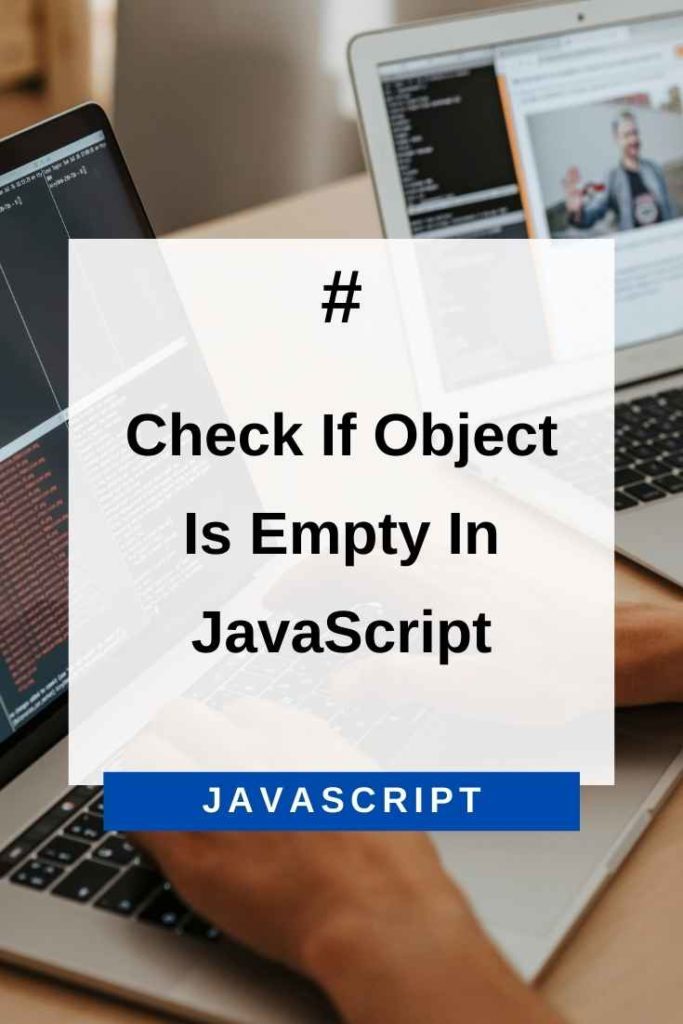In JavaScript, there are a few ways to check if an object is empty. In this blog post, we will explore 9 different methods for checking if an object is empty in JavaScript. We will also look at some examples of how to use these methods. Stay tuned!

9 Ways To Check If Object Is Empty In JavaScript
1. Using Object.keys Method
The Object.keys() method returns an array of a given object’s own enumerable property names, in the same order as that provided by a for…in loop.
Example:
var obj = { name: "John", age: 30, city: "New York" };
console.log(Object.keys(obj).length); // 3The above example returns the number of keys in the object. If the object is empty, it will return 0. So, checking of Object.keys(obj).length is 0 should be fine. Look at the below code.
if (Object.keys(obj).length === 0 && Object.constructor==Object) {
console.log("object is empty");
} else {
console.log("object is not empty");
}Notice that we also do a check for Object.constructor==Object. This is to make sure that the object is actually an object.
2. Using JSON.stringify() Method
The JSON.stringify() converts an object to a JSON string. If the object is empty, it will return “{}”. So, we can use this method to check if an object is empty.
Example:
var obj = { name: "John", age: 30, city: "New York" };
if(JSON.stringify(obj) === "{}") {
console.log("object is empty");
} else {
console.log("object is not empty");
}3. Using jQuery.isEmptyObject()
If you are using jQuery, then you can use the jQuery.isEmptyObject() method to check if an object is empty.
Example:
var obj = { name: "John", age: 30, city: "New York" };
if($.isEmptyObject(obj)) {
console.log("object is empty");
} else {
console.log("object is not empty");
}4. Using ES6 Object.entries() Method
The Object.entries() method returns an array of a given object’s own enumerable property [[key, value]] pairs, in the same order as that provided by a for…in loop.
Example:
var obj = { name: "John", age: 30, city: "New York" };
if(Object.entries(obj).length === 0 && Object.constructor==Object) {
console.log("object is empty");
} else {
console.log("object is not empty");
}The above example returns the number of key-value pairs in the object. If the object is empty, it will return 0.
5. Using UnderScrore And Lodash IsEmpty Methods
If you are using Underscore.js or LoDash, then you can use their isEmpty methods to check if an object is empty.
Example:
var obj = { name: "John", age: 30, city: "New York" };
if(_.isEmpty(obj)) {
console.log("object is empty");
} else {
console.log("object is not empty");
}6. Using ES7 Object.values() method
The Object.values() method returns an array of a given object’s own enumerable property values, in the same order as that provided by a for…in loop.
Example:
var obj = { name: "John", age: 30, city: "New York" };
if(Object.values(obj).length === 0 && Object.constructor==Object) {
console.log("object is empty");
} else {
console.log("object is not empty");
}The above example returns the number of values in the object. If the object is empty, it will return 0.
7. Using Ramda IsEmpty Method
If you are using Ramda, then you can use its isEmpty method to check if an object is empty.
Example:
var obj = { name: "John", age: 30, city: "New York" };
if(R.isEmpty(obj)) {
console.log("object is empty");
} else {
console.log("object is not empty");
}8. Using Immutable IsEmpty Method
If you are using Immutable, then you can use its isEmpty method to check if an object is empty.
Example:
var obj = { name: "John", age: 30, city: "New York" };
if(Immutable.isEmpty(obj)) {
console.log("object is empty");
} else {
console.log("object is not empty");
}9. Using Hoek IsEmpty Method
If you are using Hoek, then you can use its deepEqual method to check if an object is empty.
Example:
var obj = { name: "John", age: 30, city: "New York" };
if (Hoek.deepEqual(obj, {})) {
console.log("object is empty");
} else {
console.log("object is not empty");
}Thus, there are many ways to check if an object is empty in JavaScript. You can choose any method based on your requirements and the libraries you are using in your project.
Conclusion – Check If Object Is Empty In JavaScript
In this article, you learned different ways to check if an object is empty in JavaScript. You also learned about the advantages and disadvantages of each method. I hope this article was helpful and that you now have a better understanding of how to check if an object is empty in JavaScript.
If you have any questions or comments, please feel free to leave them below.
